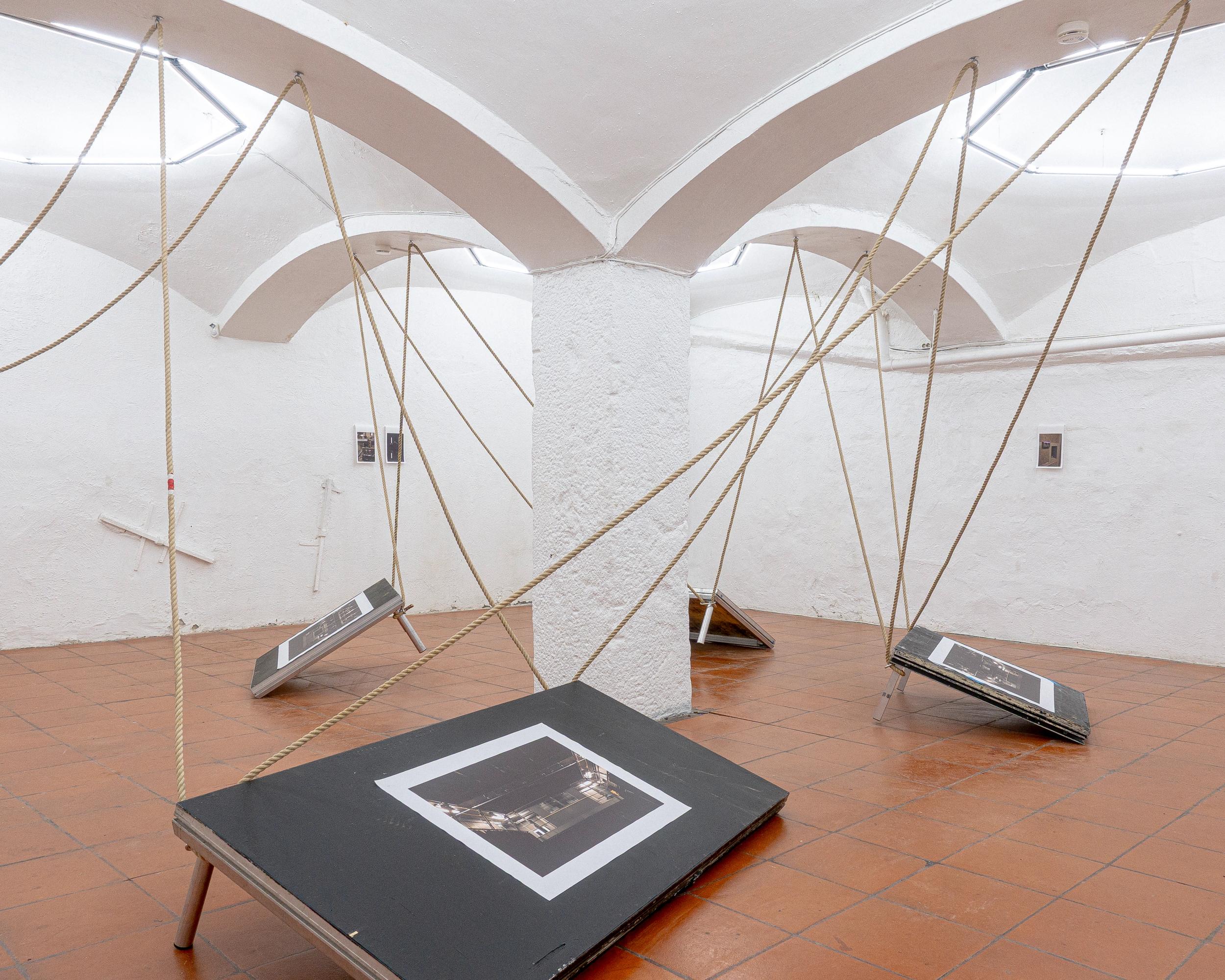 Stanchions Don’t Thresh, 2025
Stanchions Don’t Thresh, 2025Theatre rope and photographs (inkjet on canvas) on stage elements
Dimensions variable
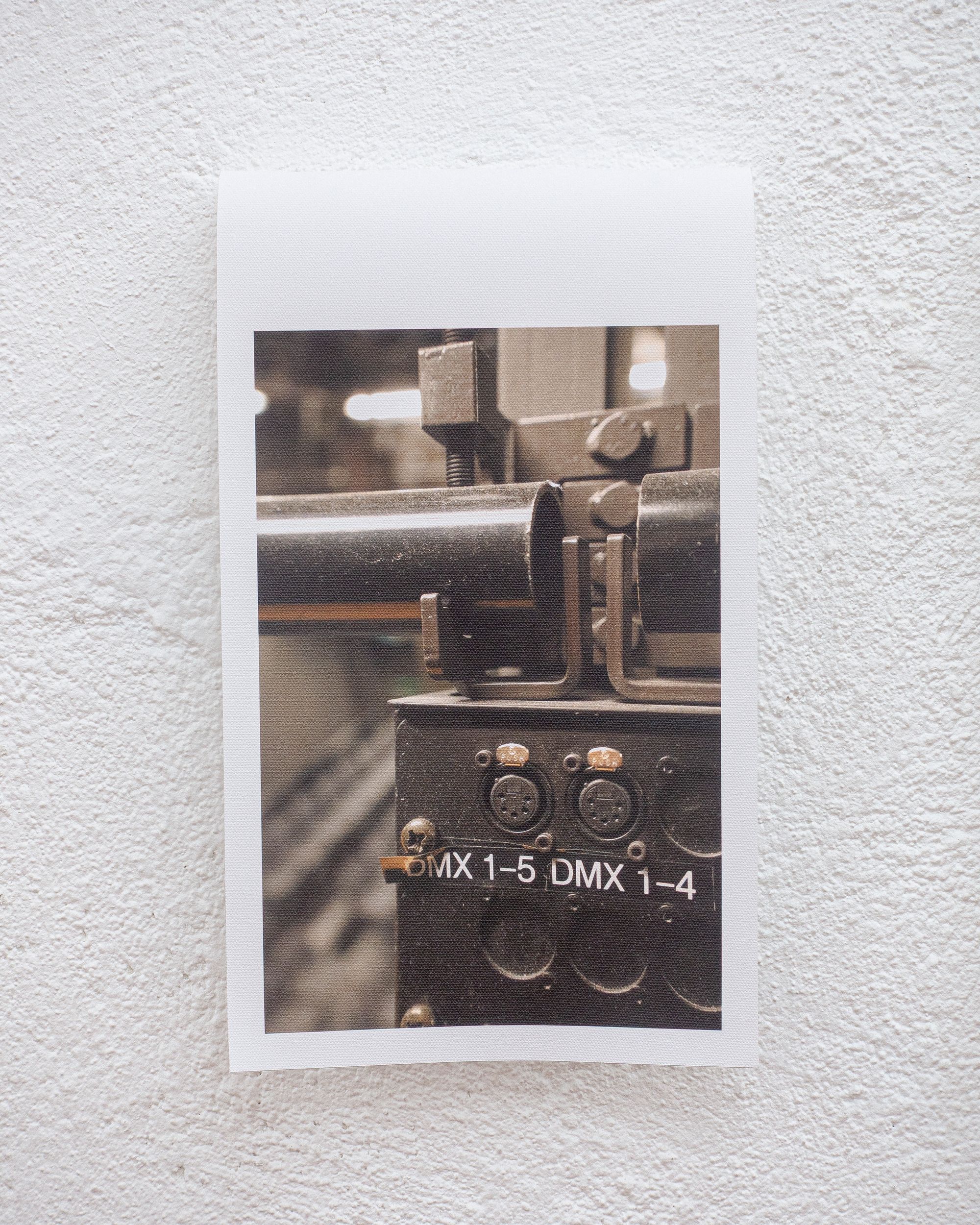
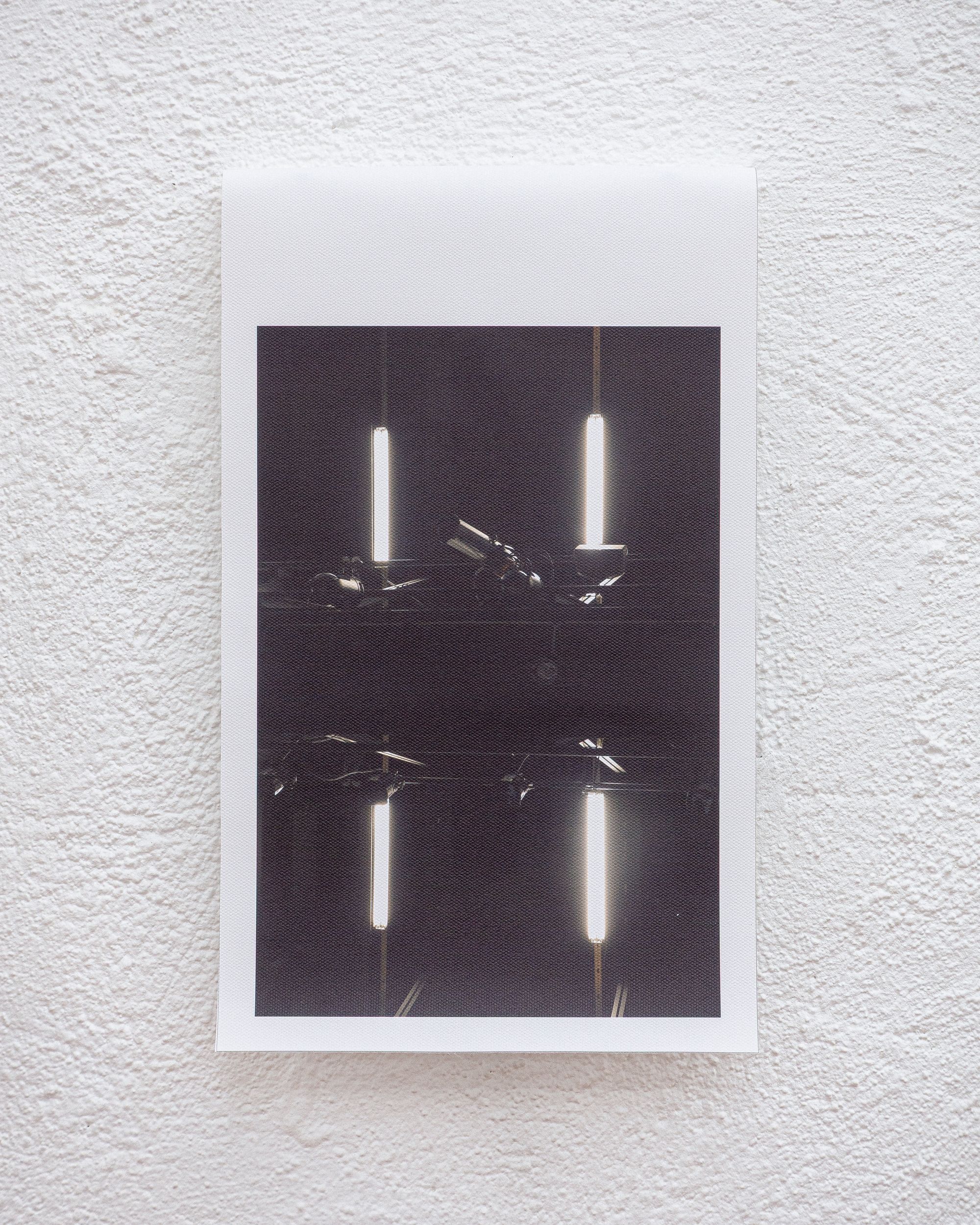
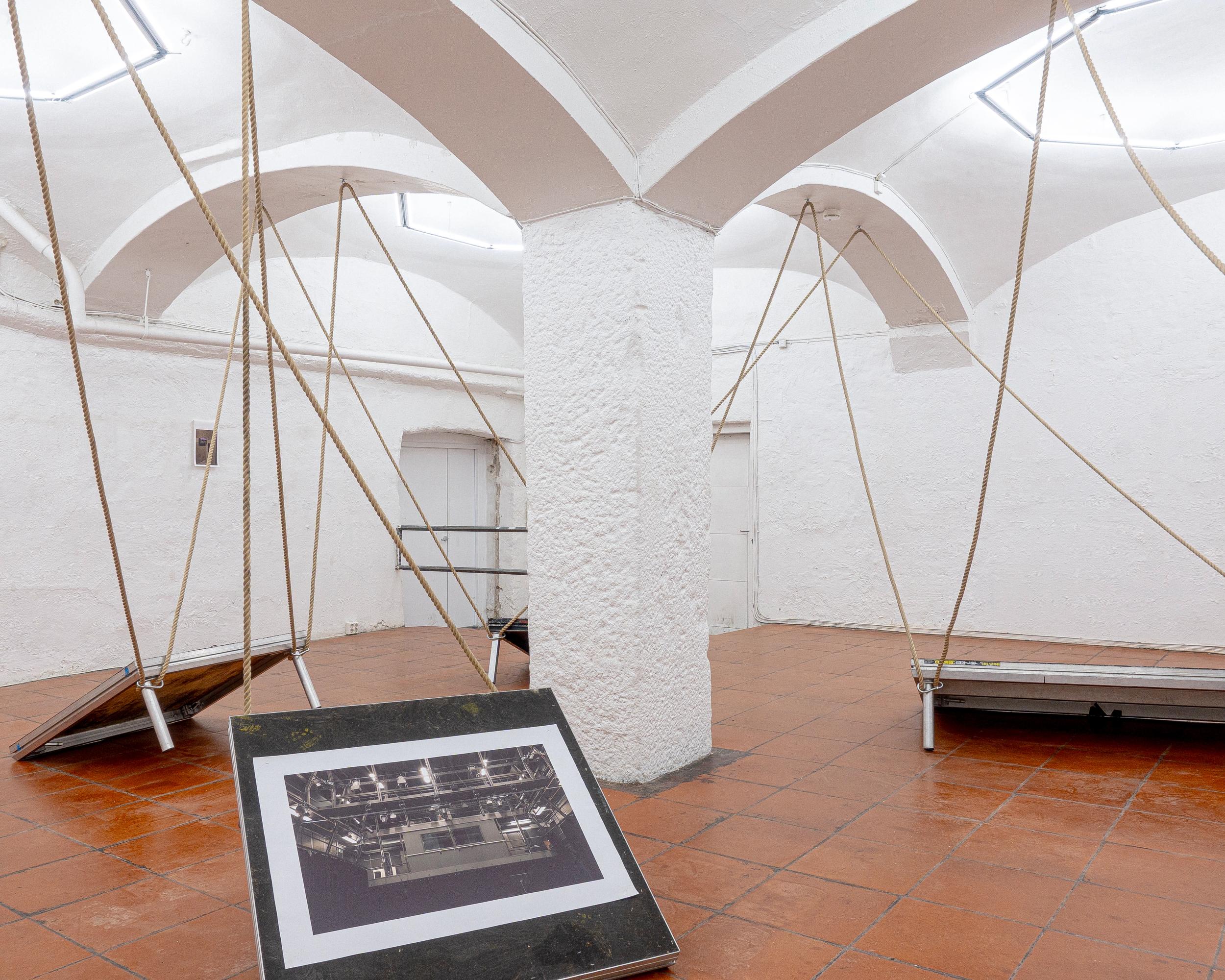
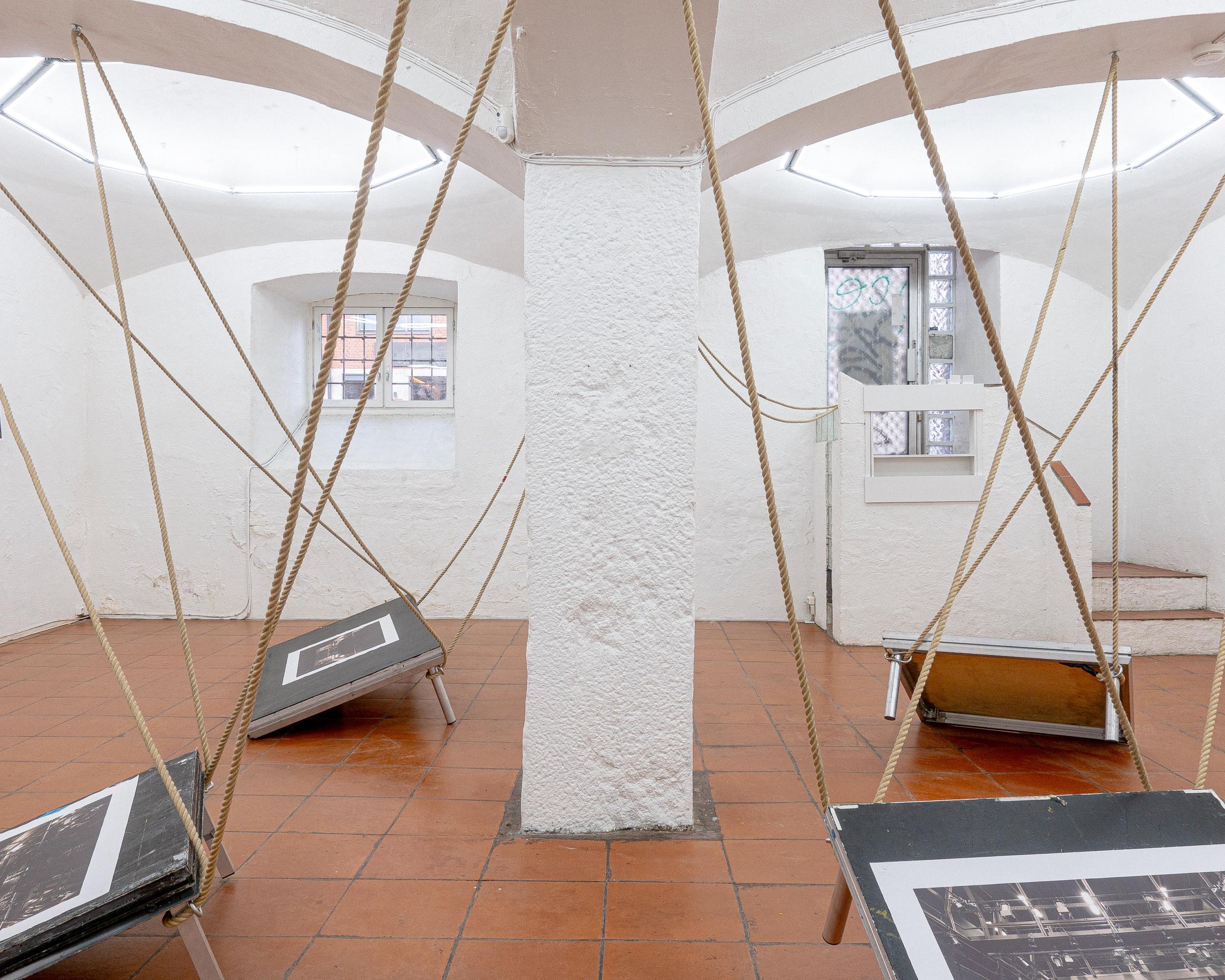
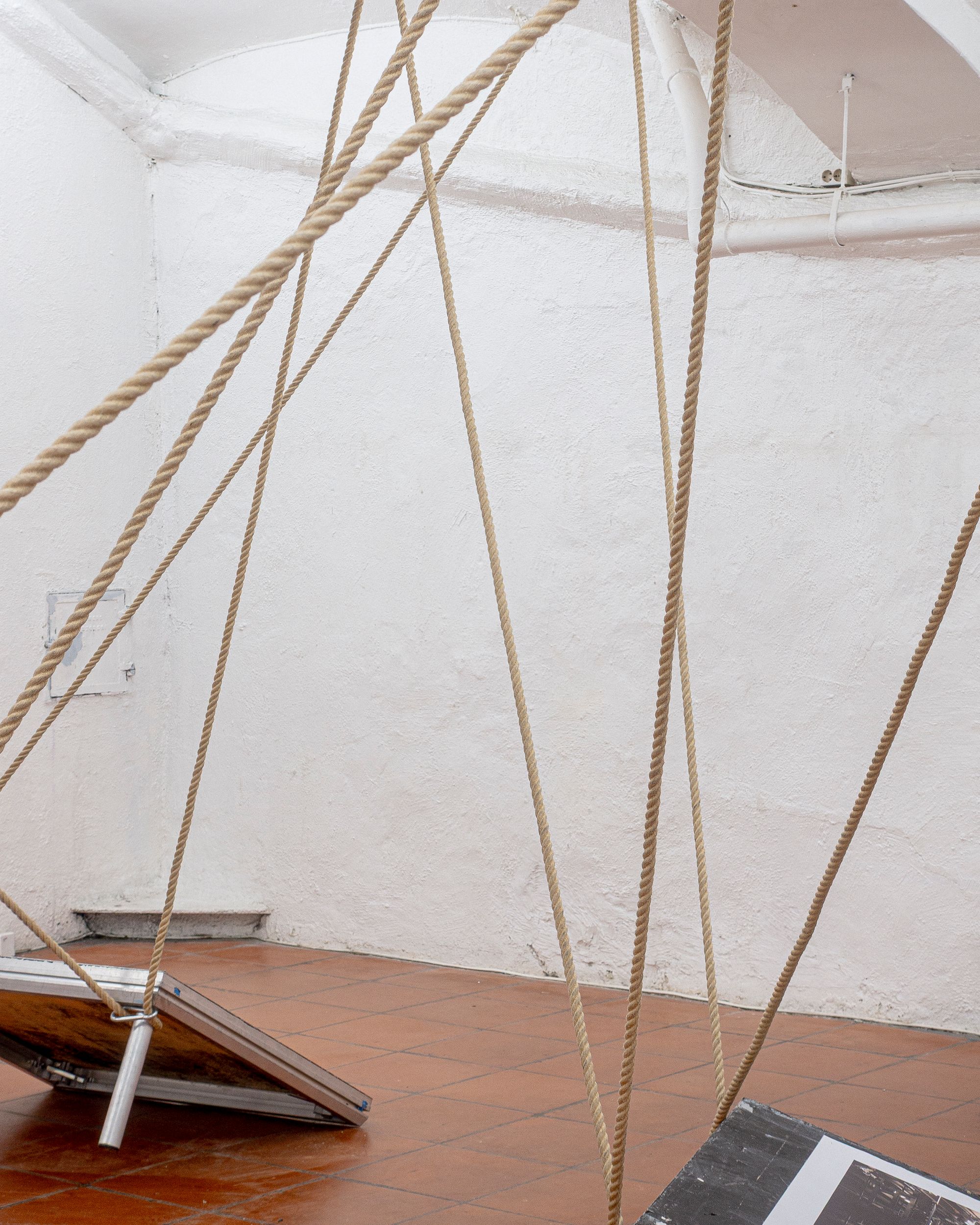
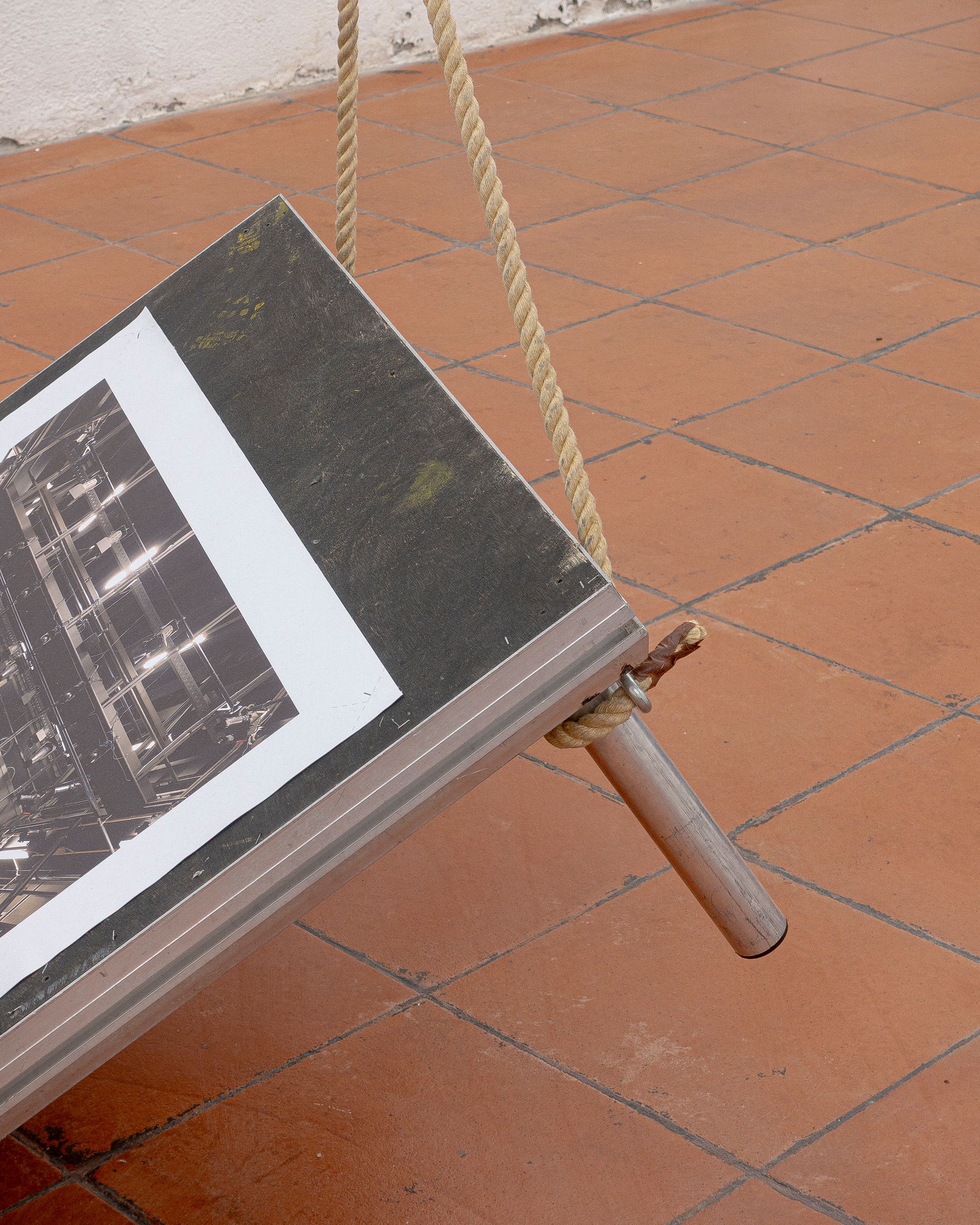
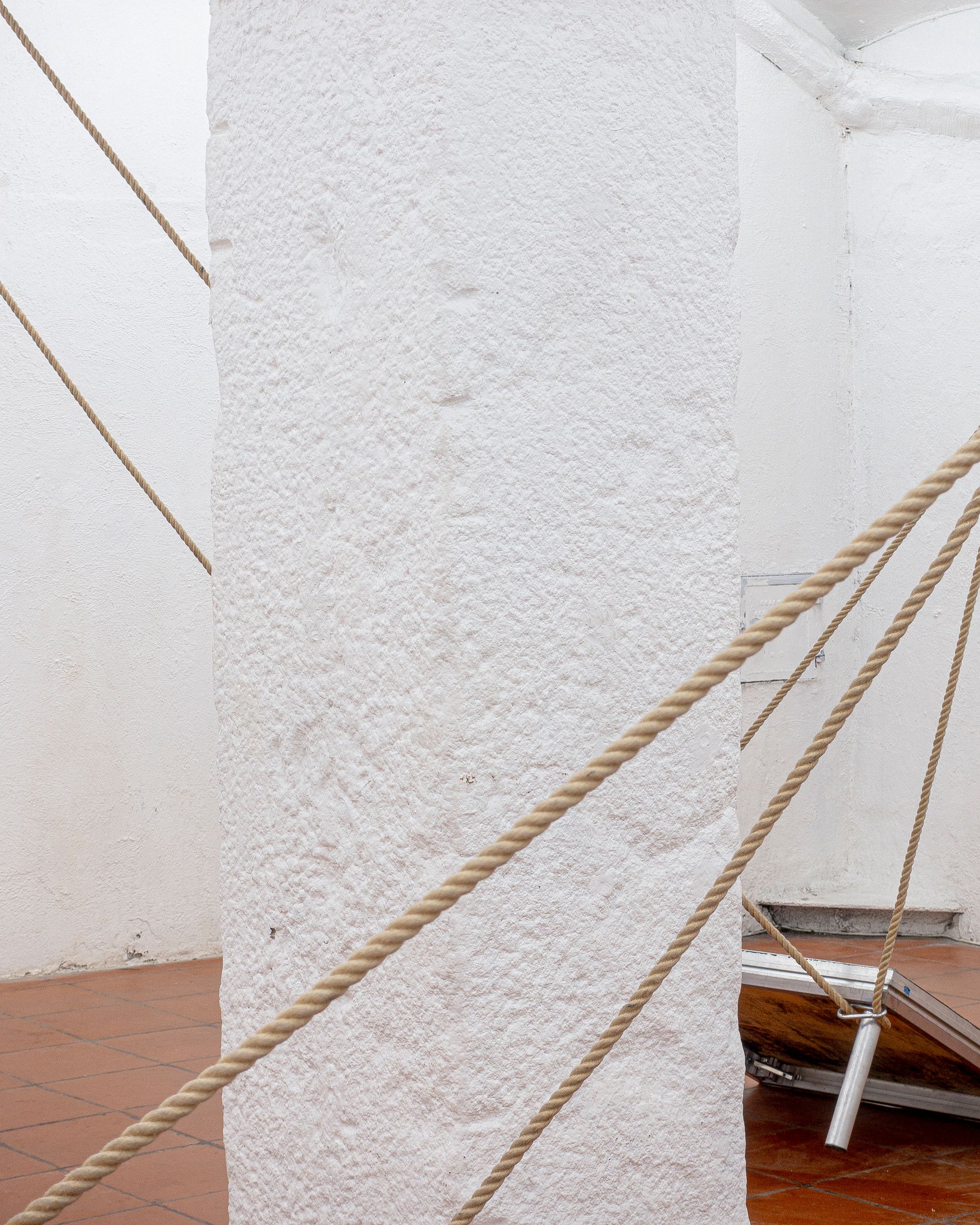
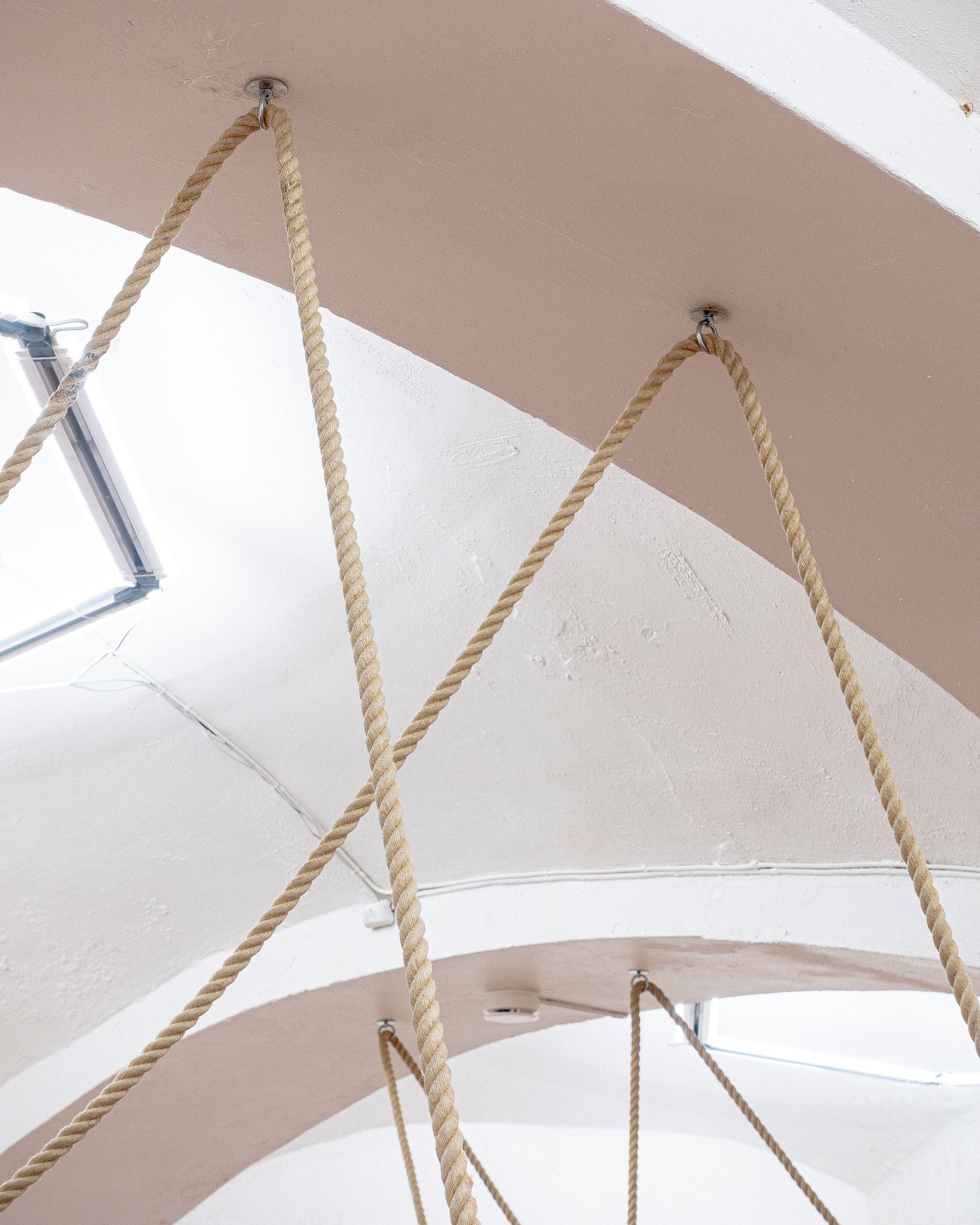
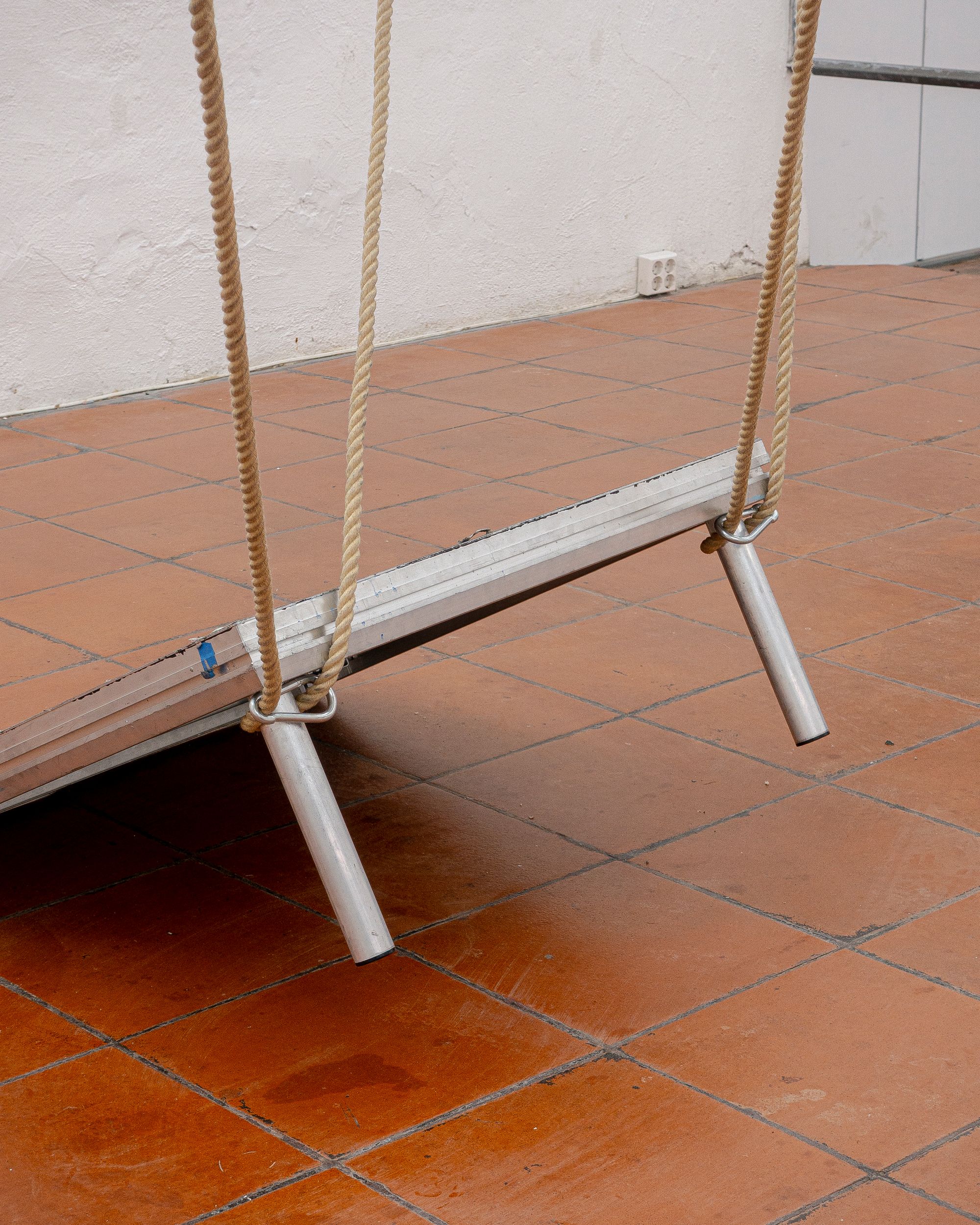
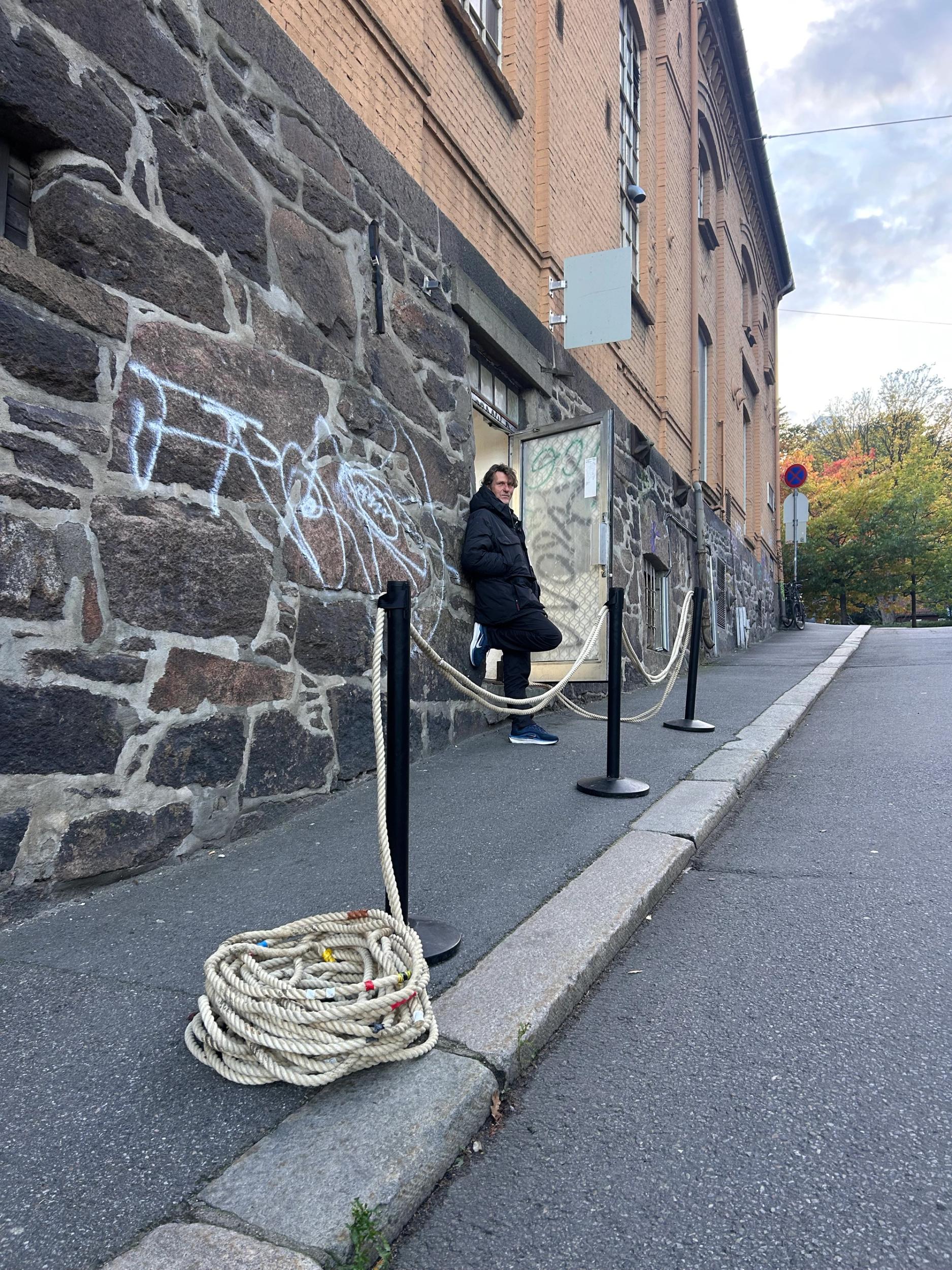
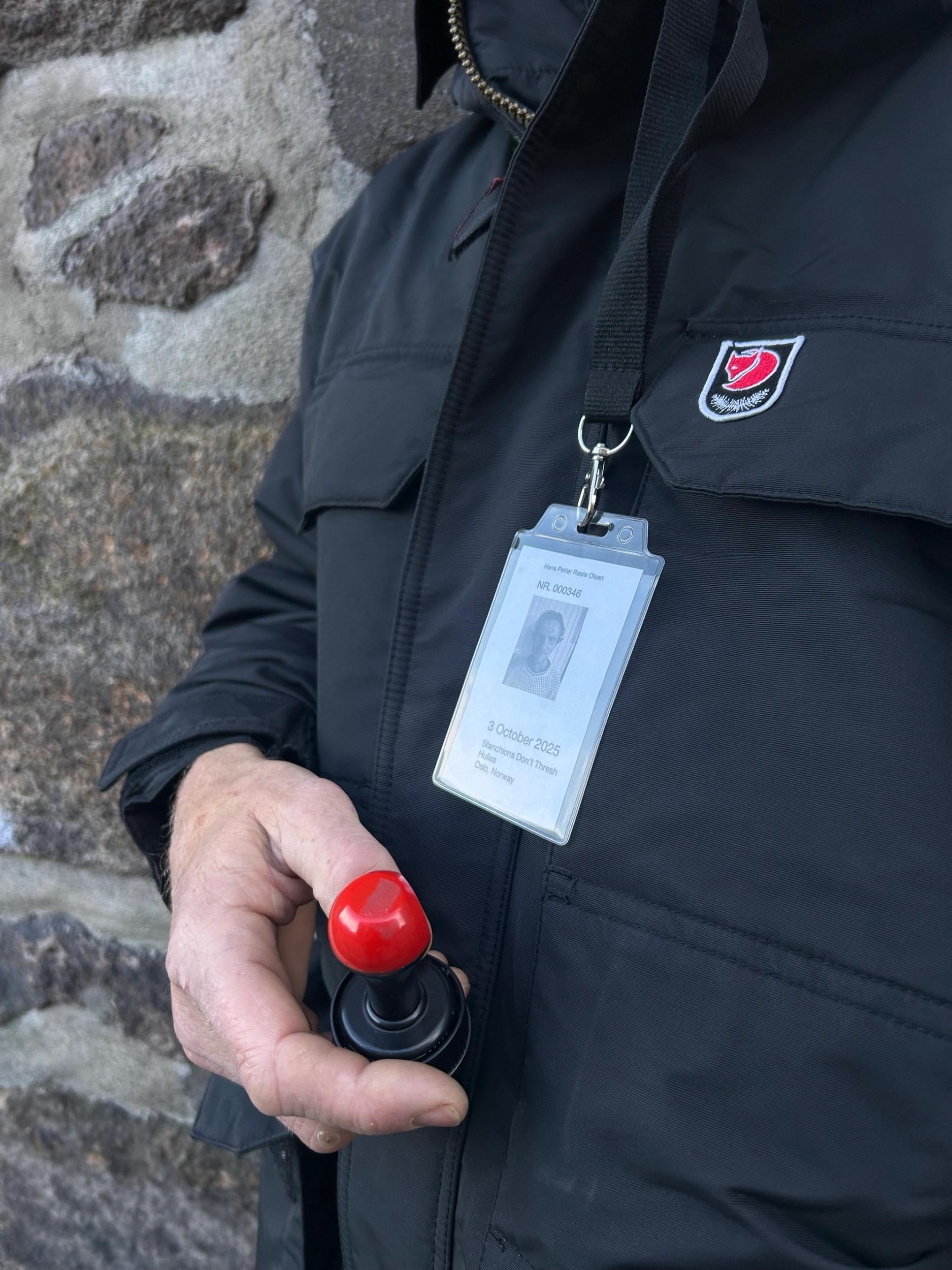
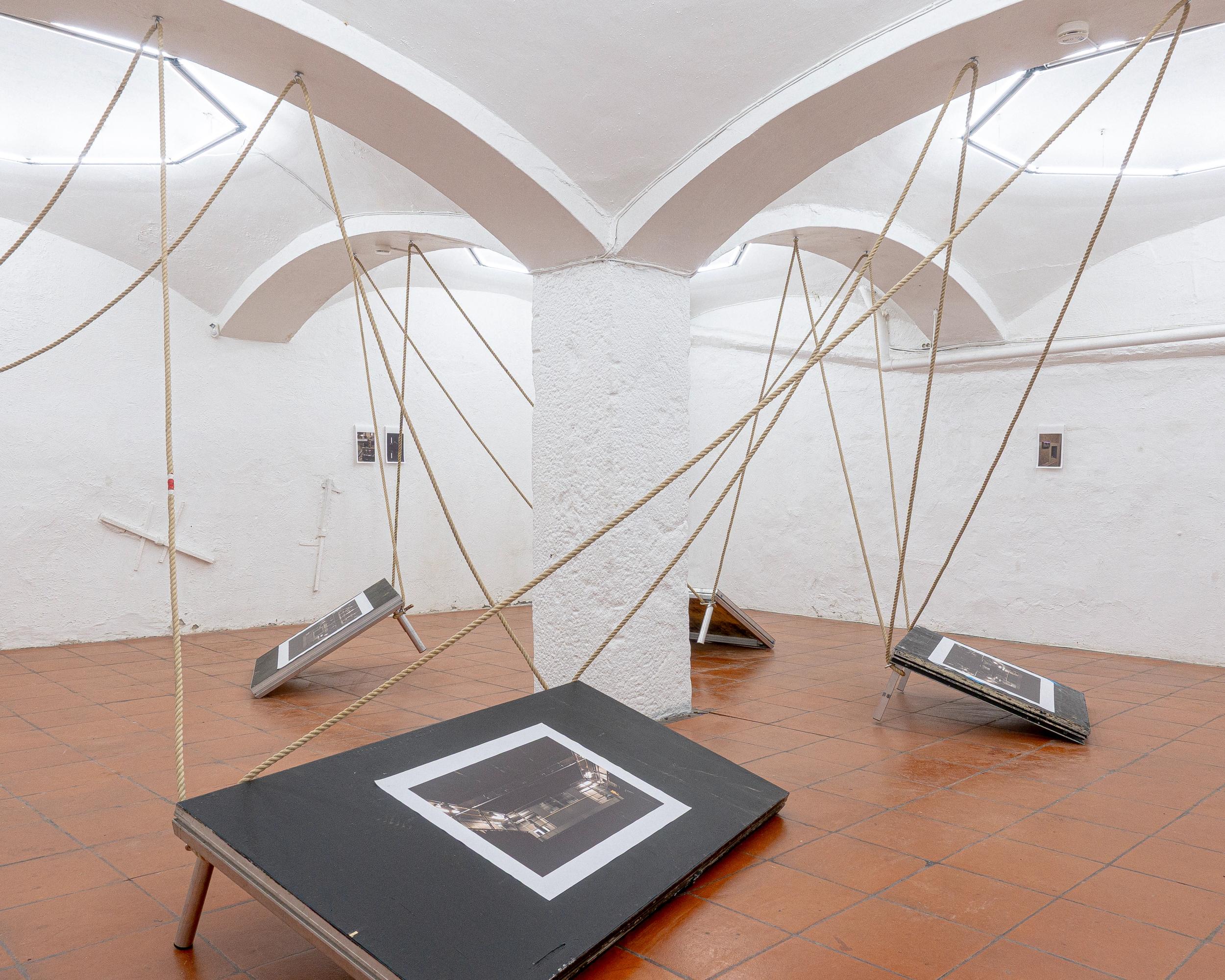
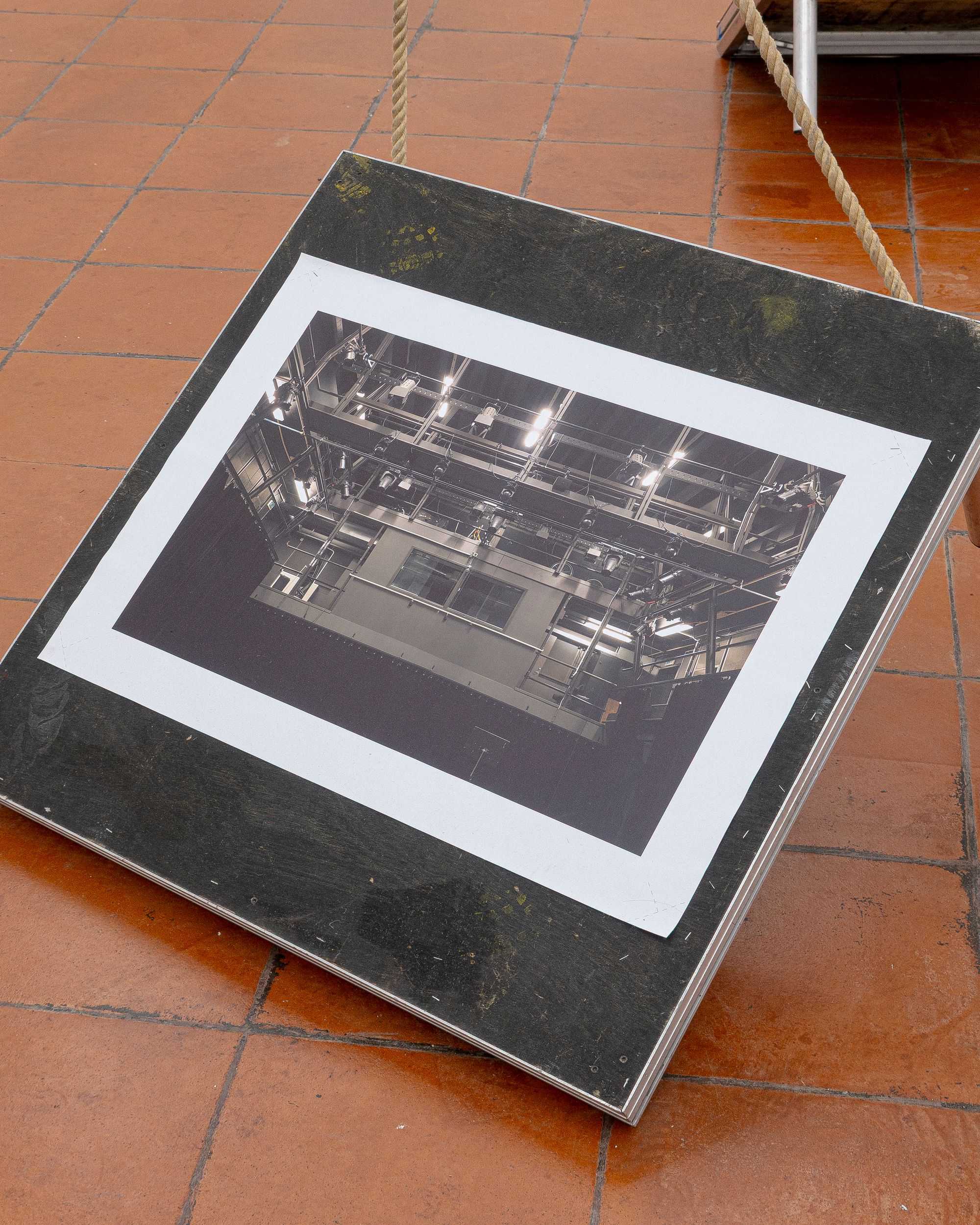
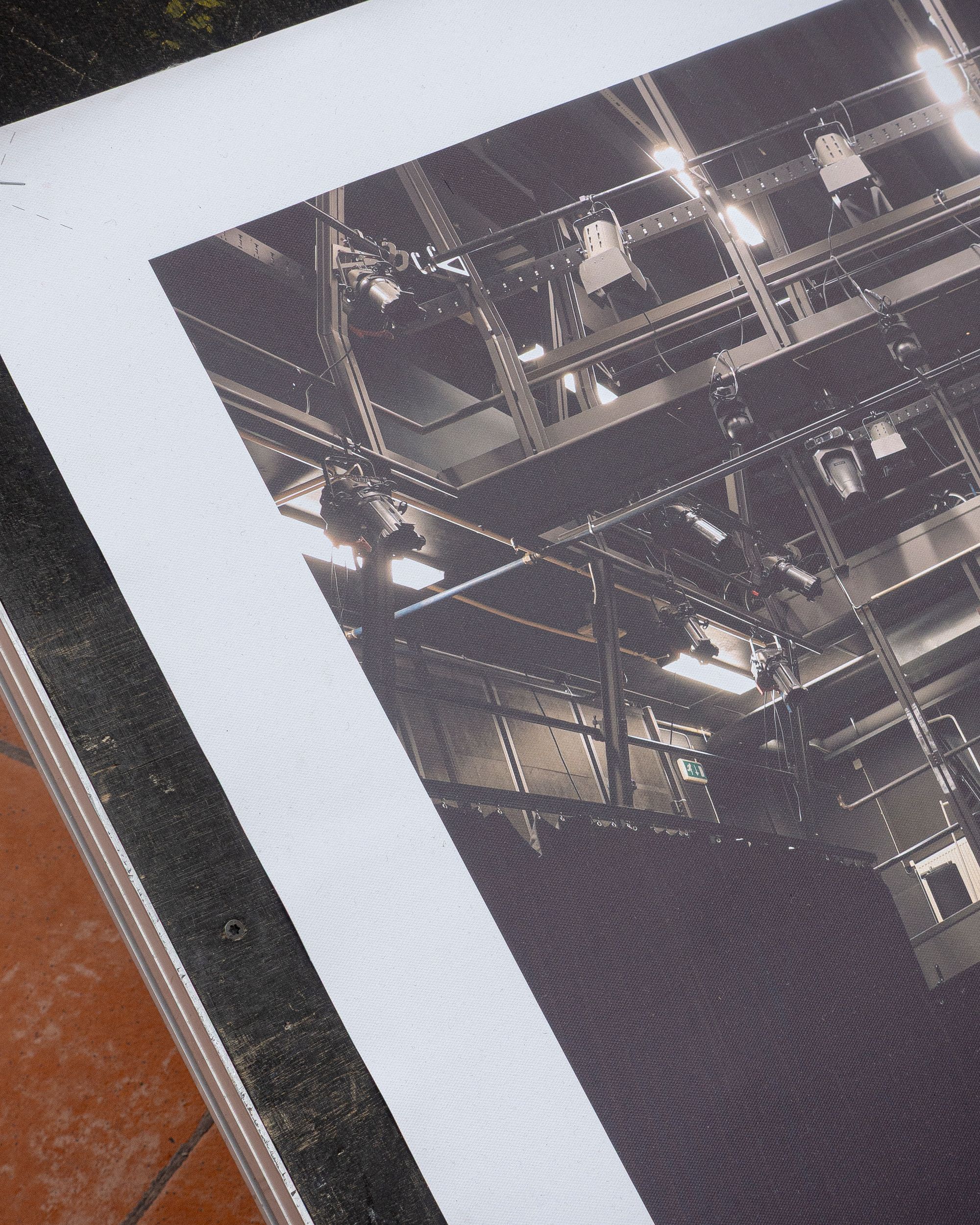
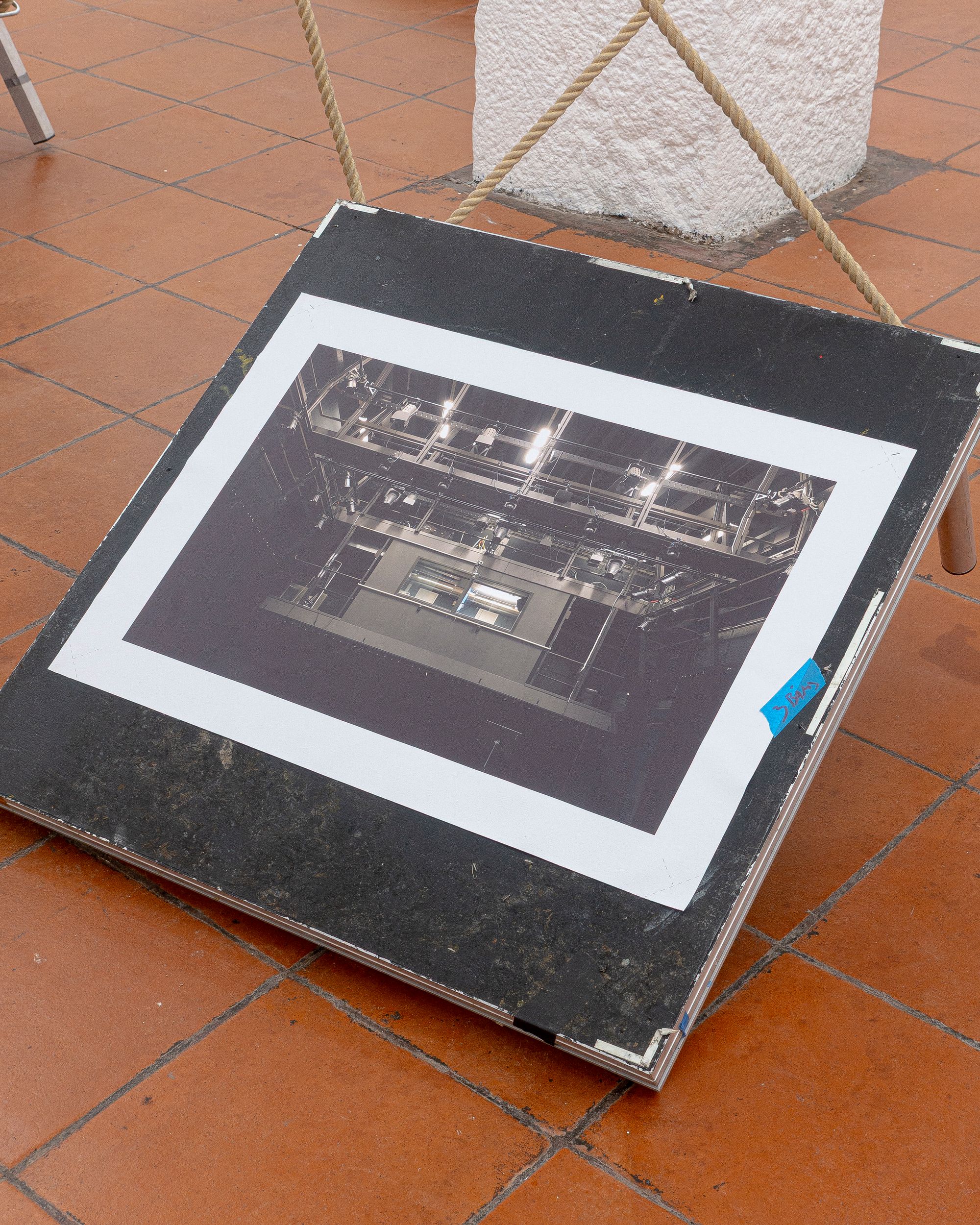
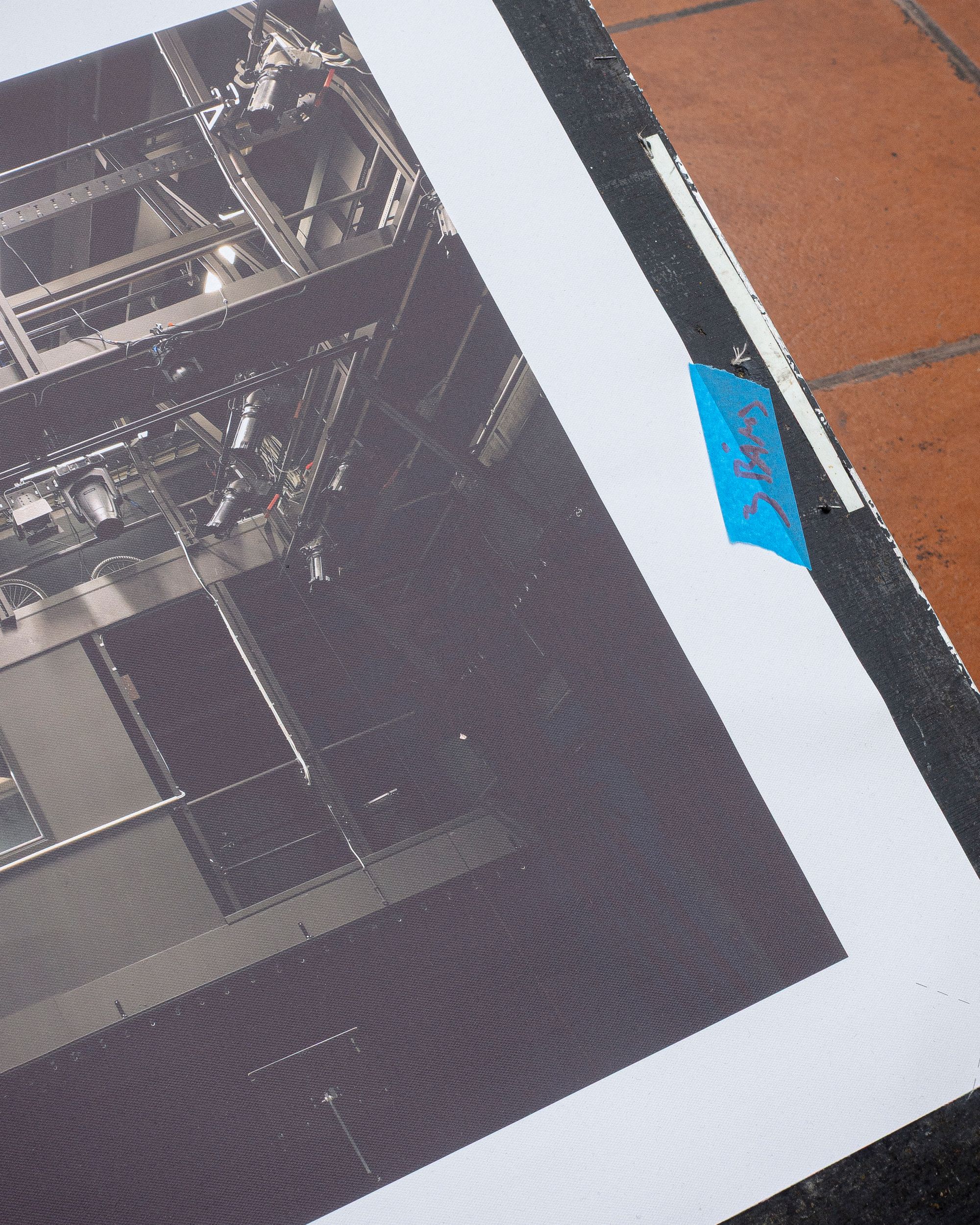
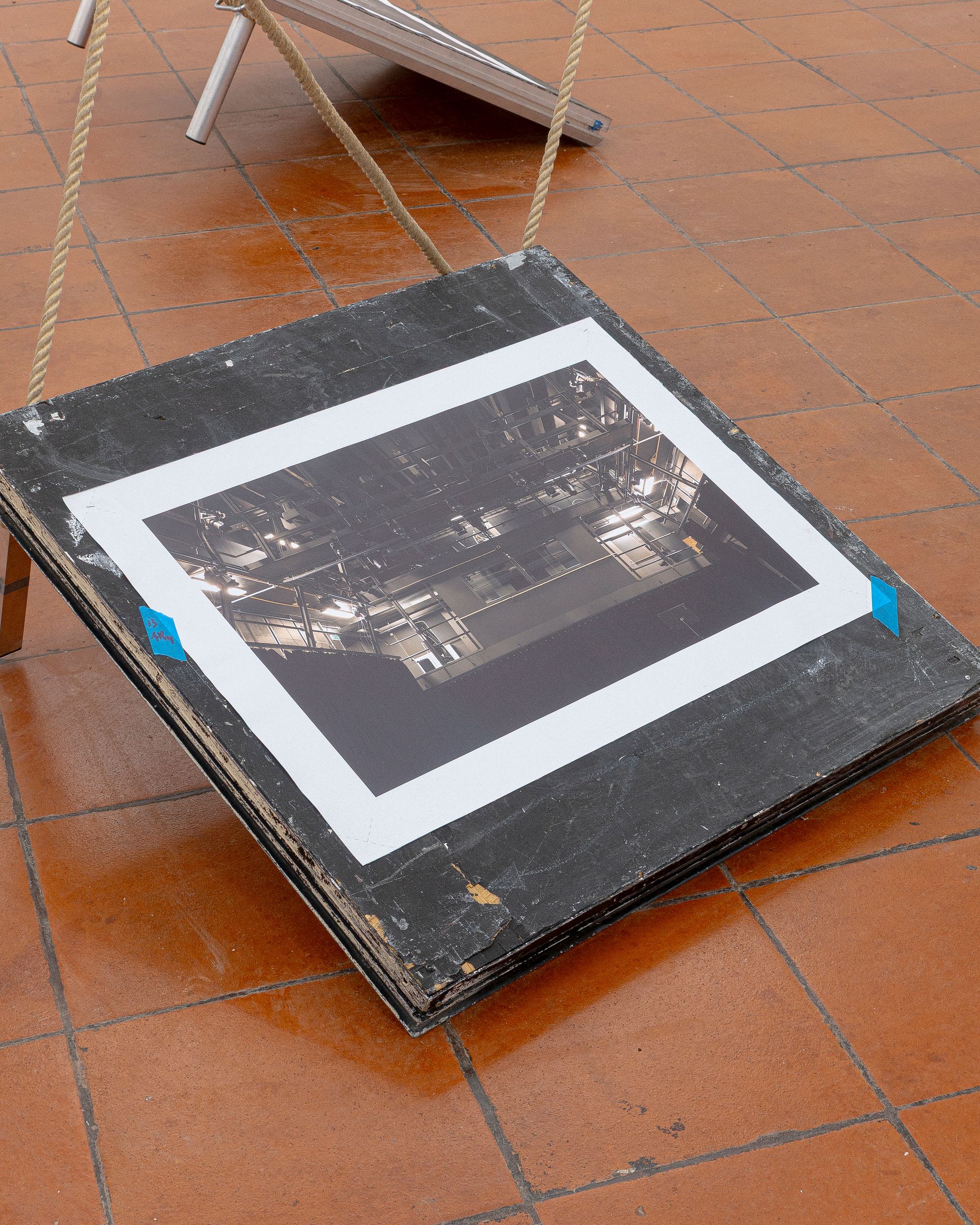
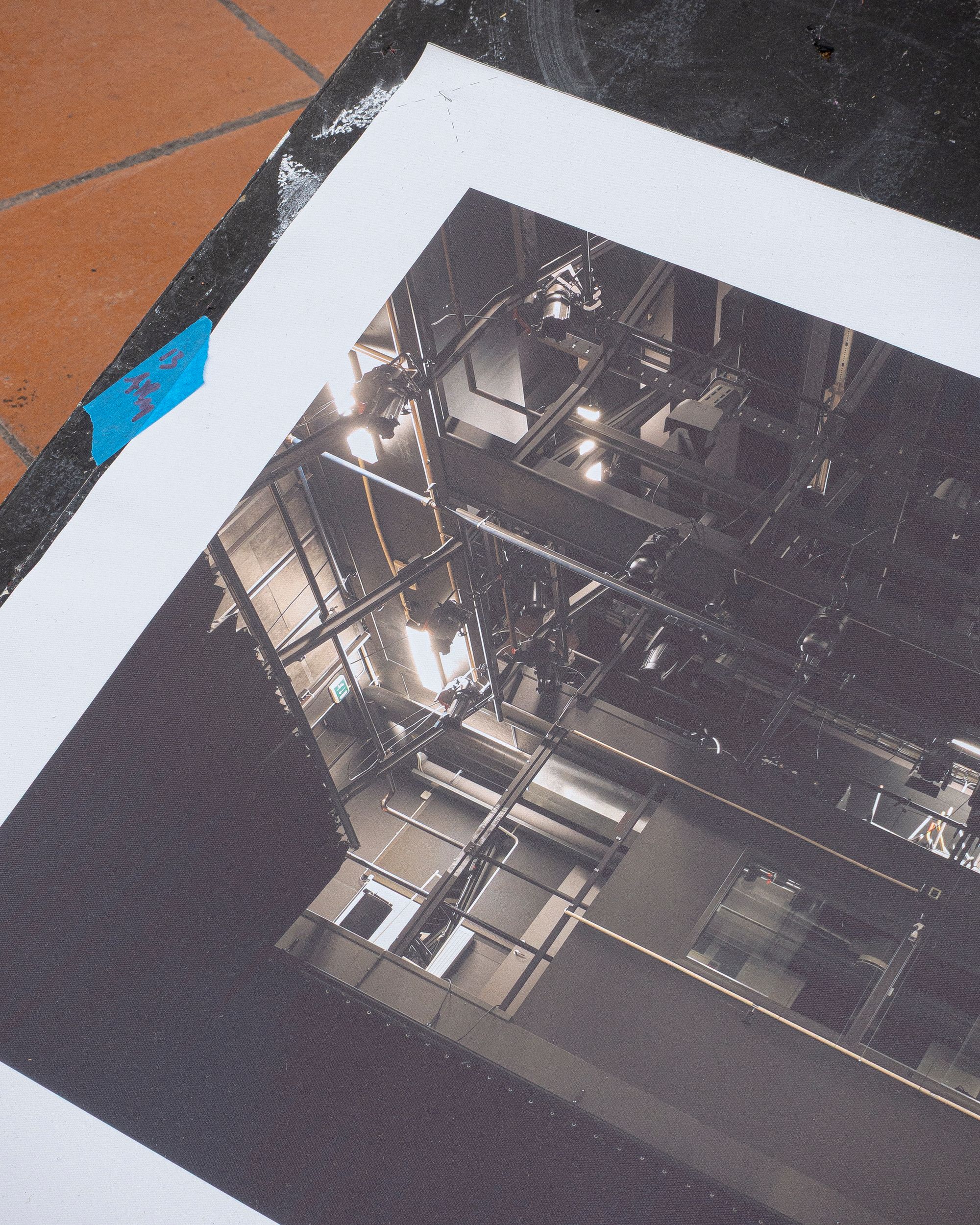
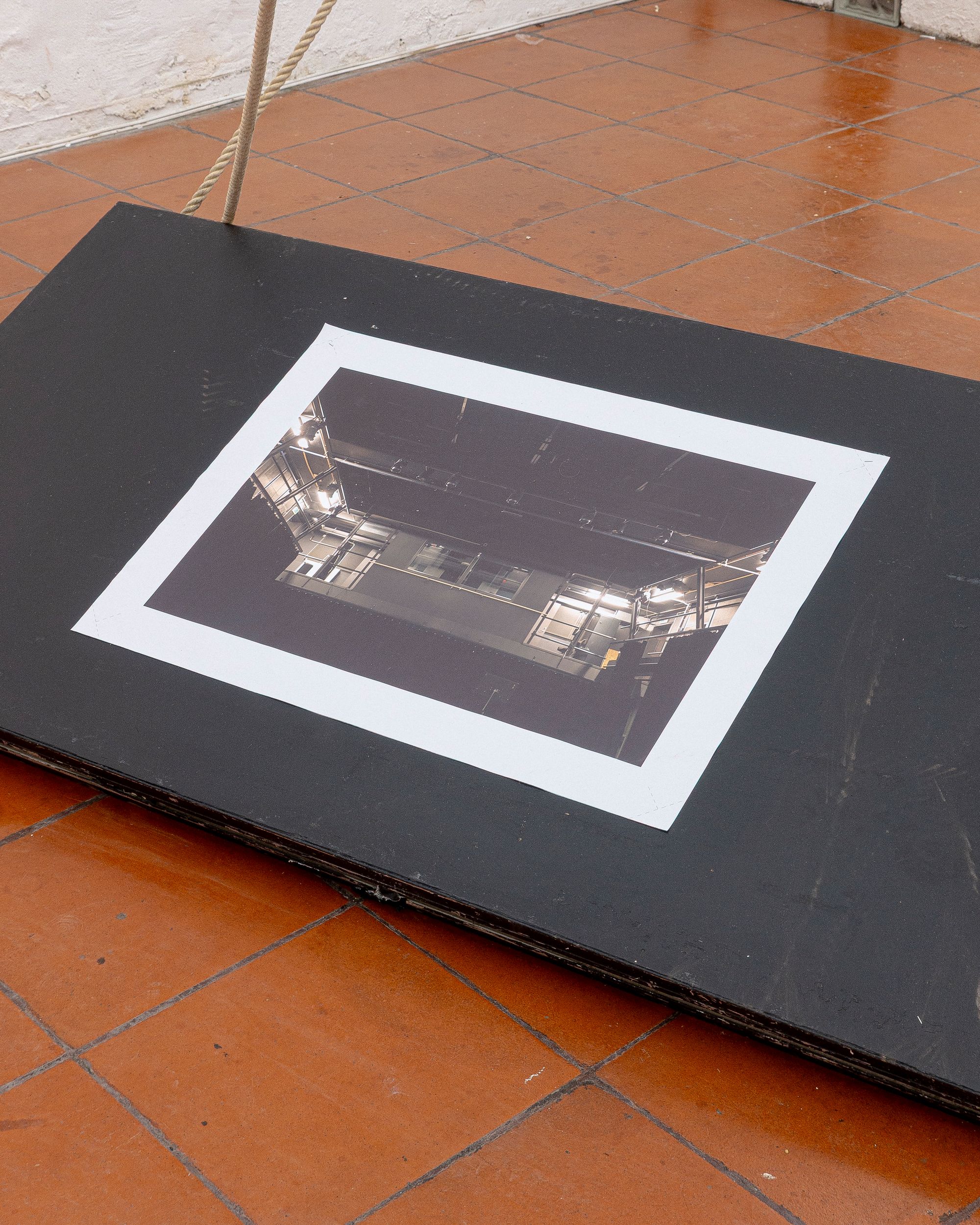
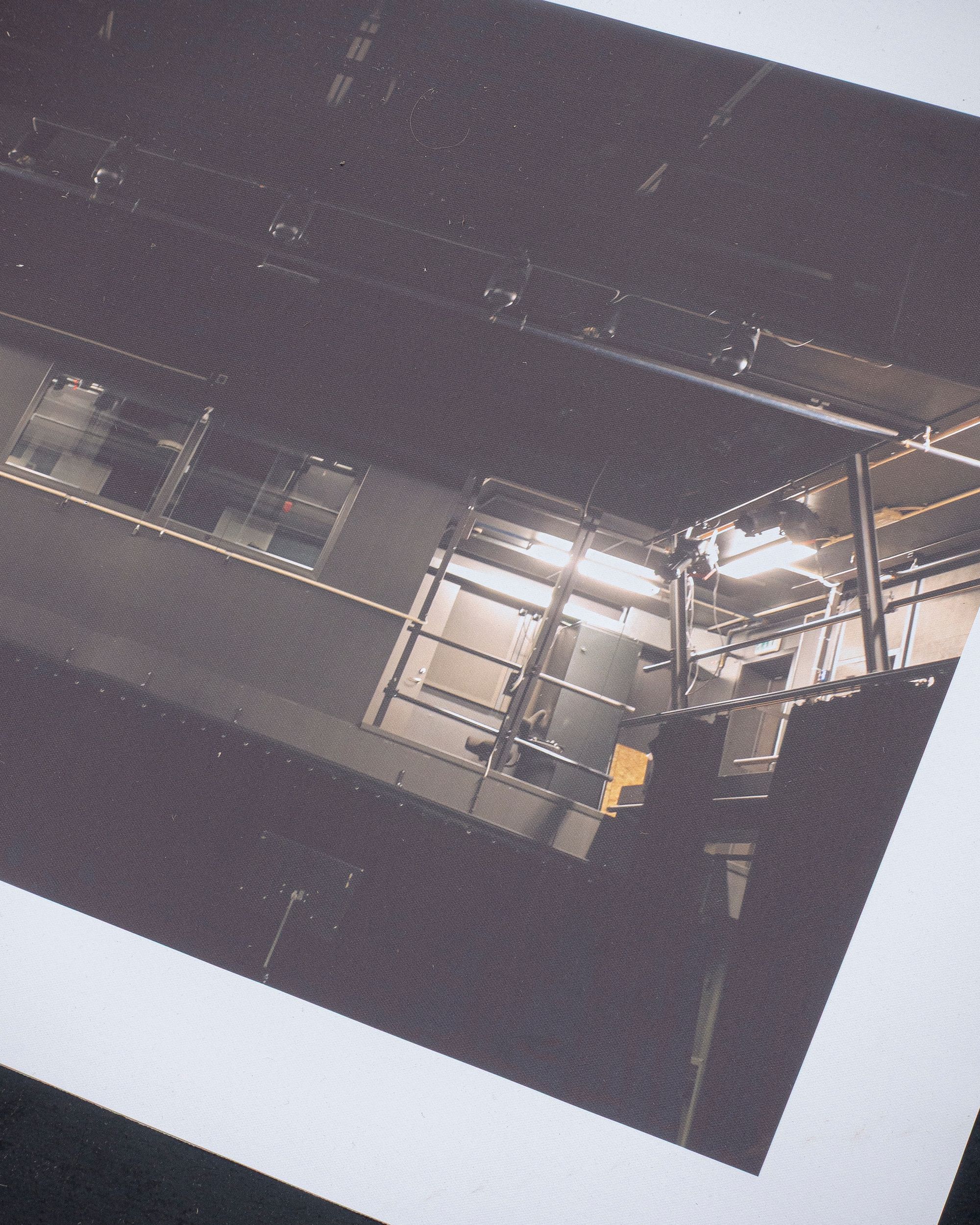
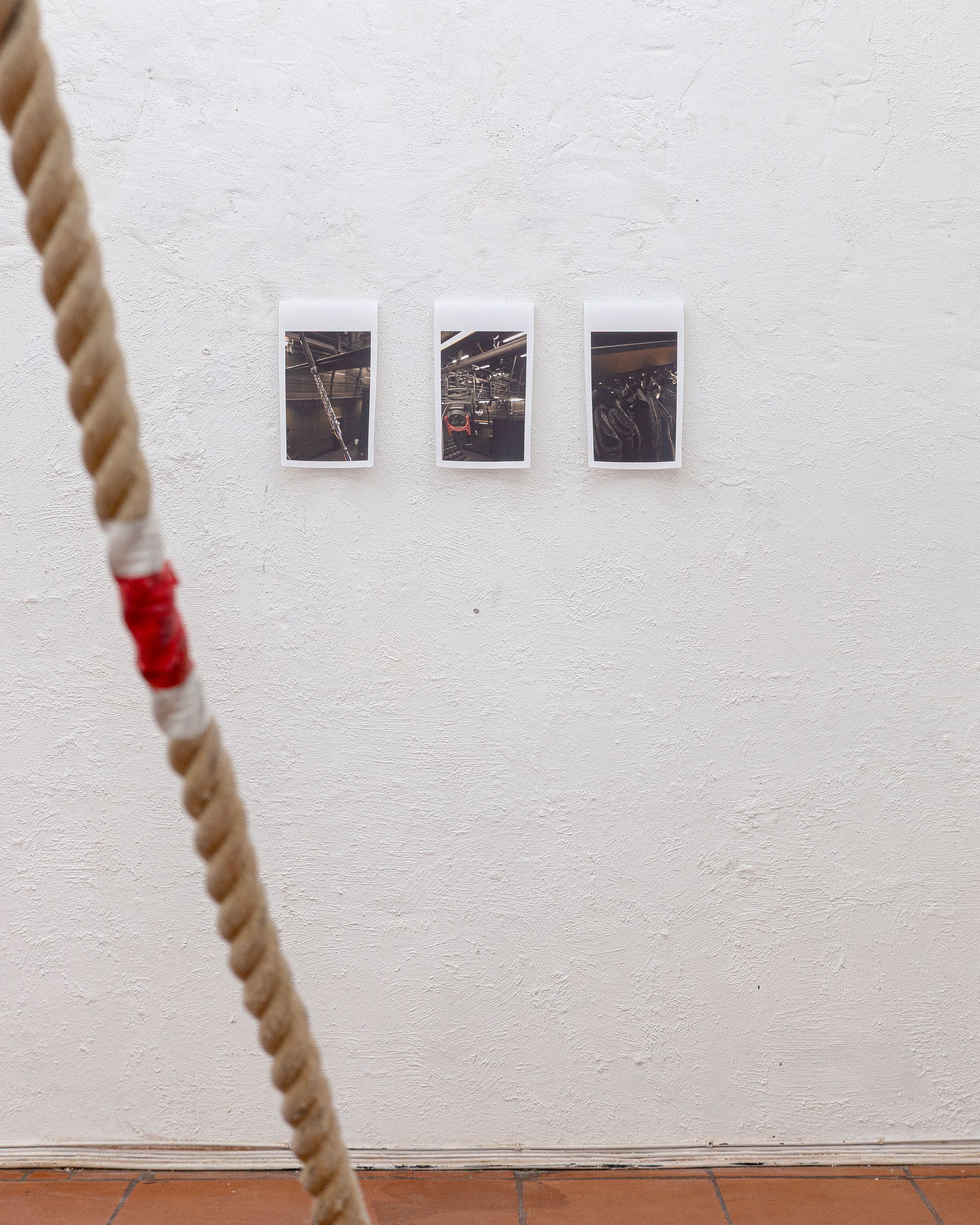
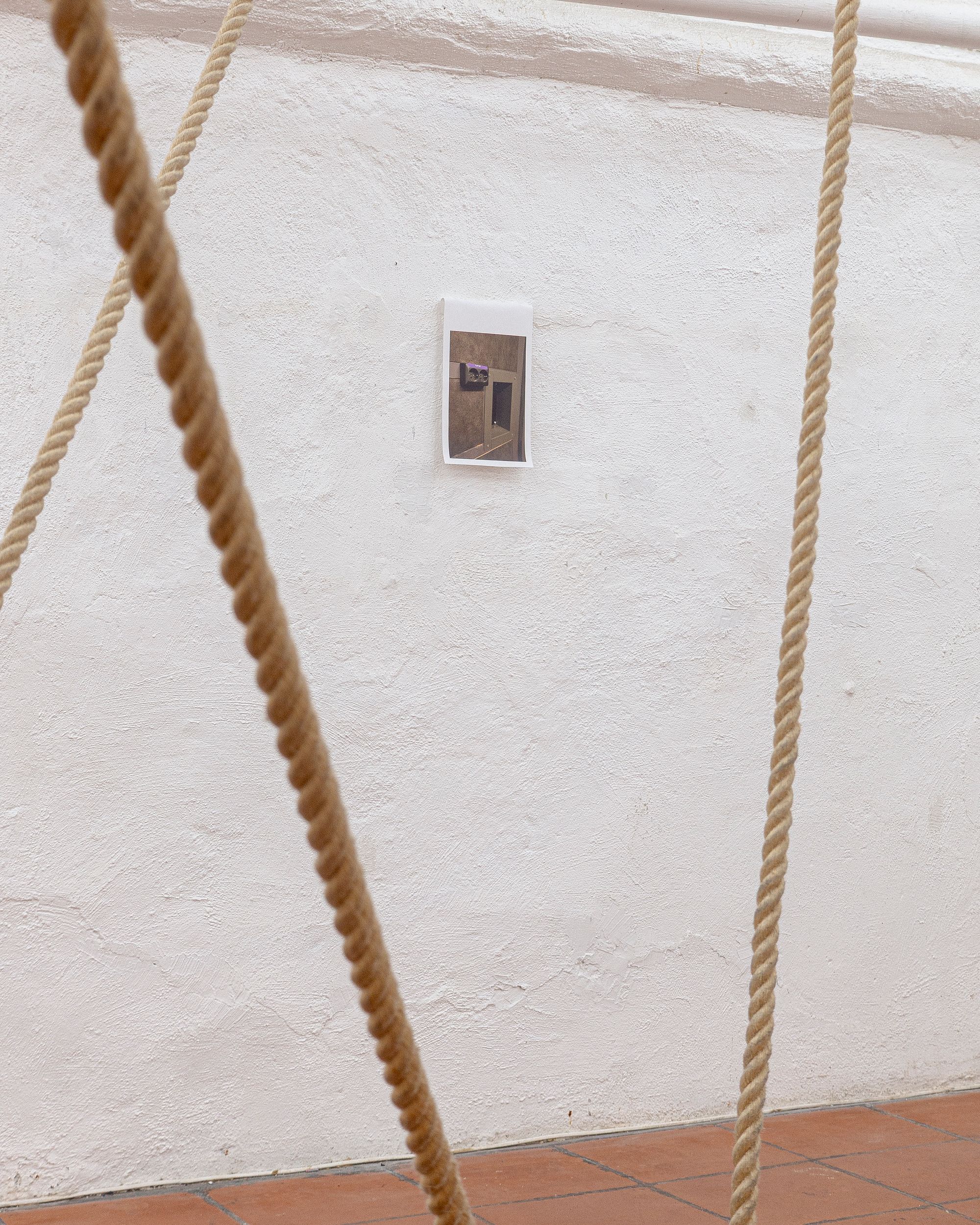
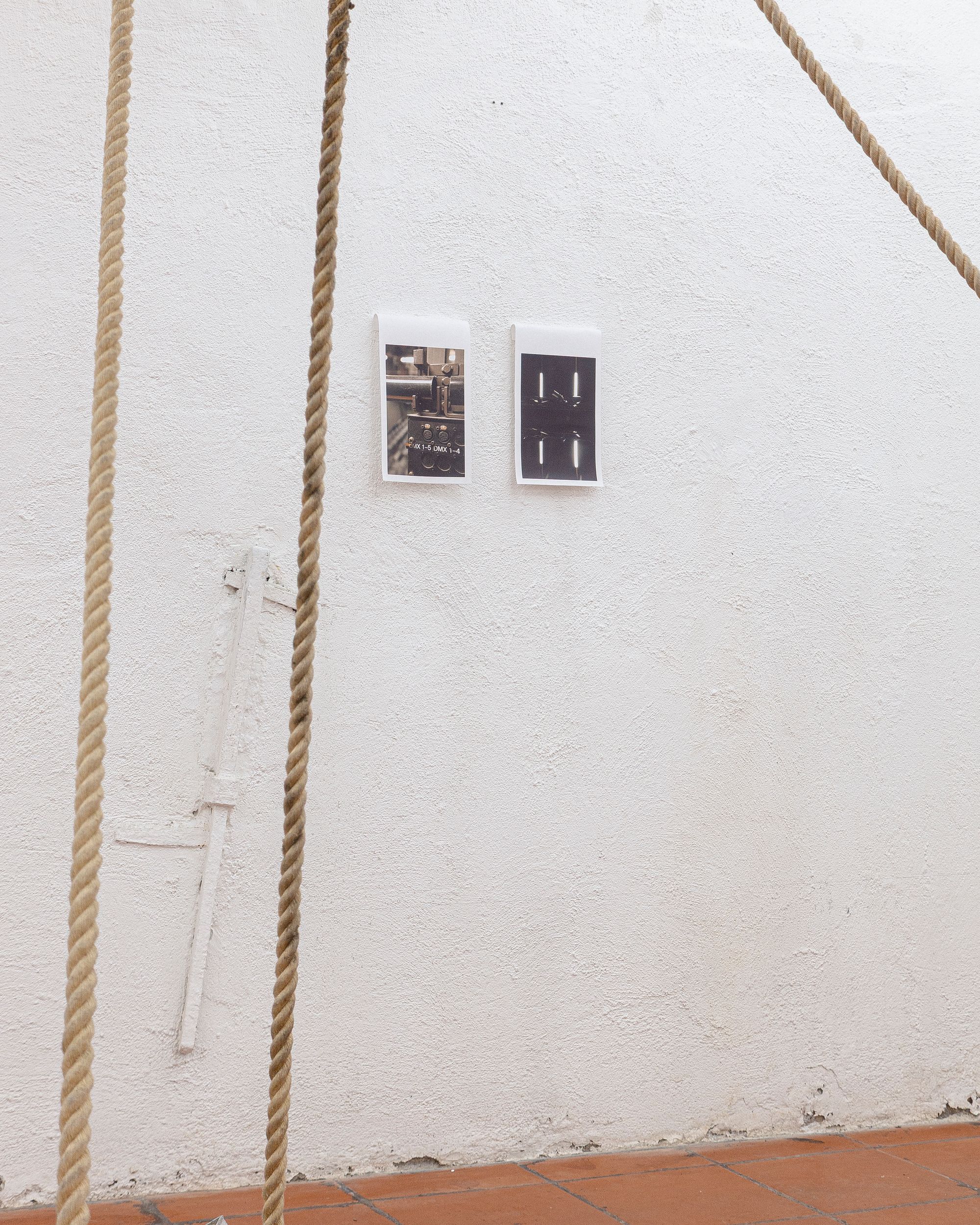
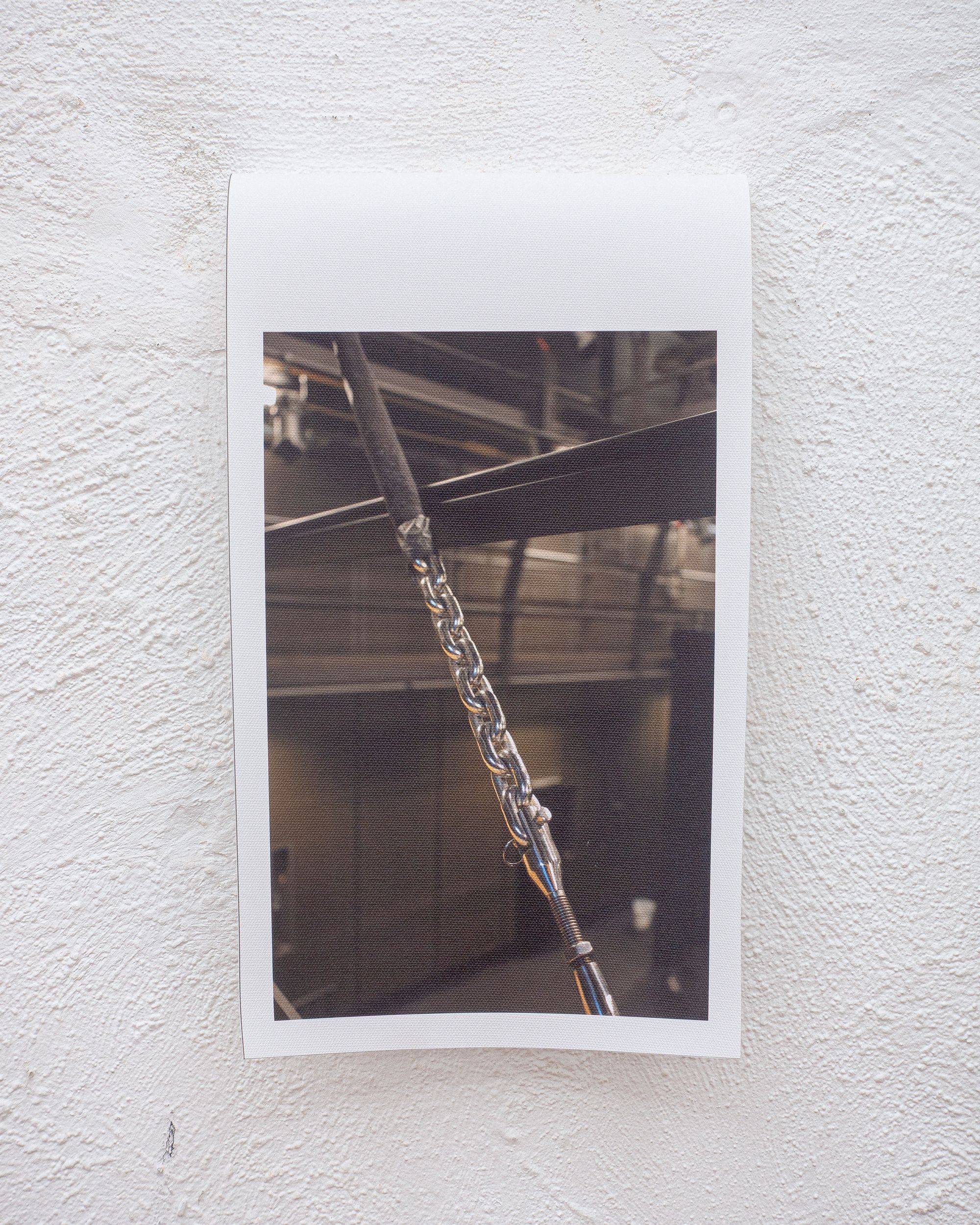
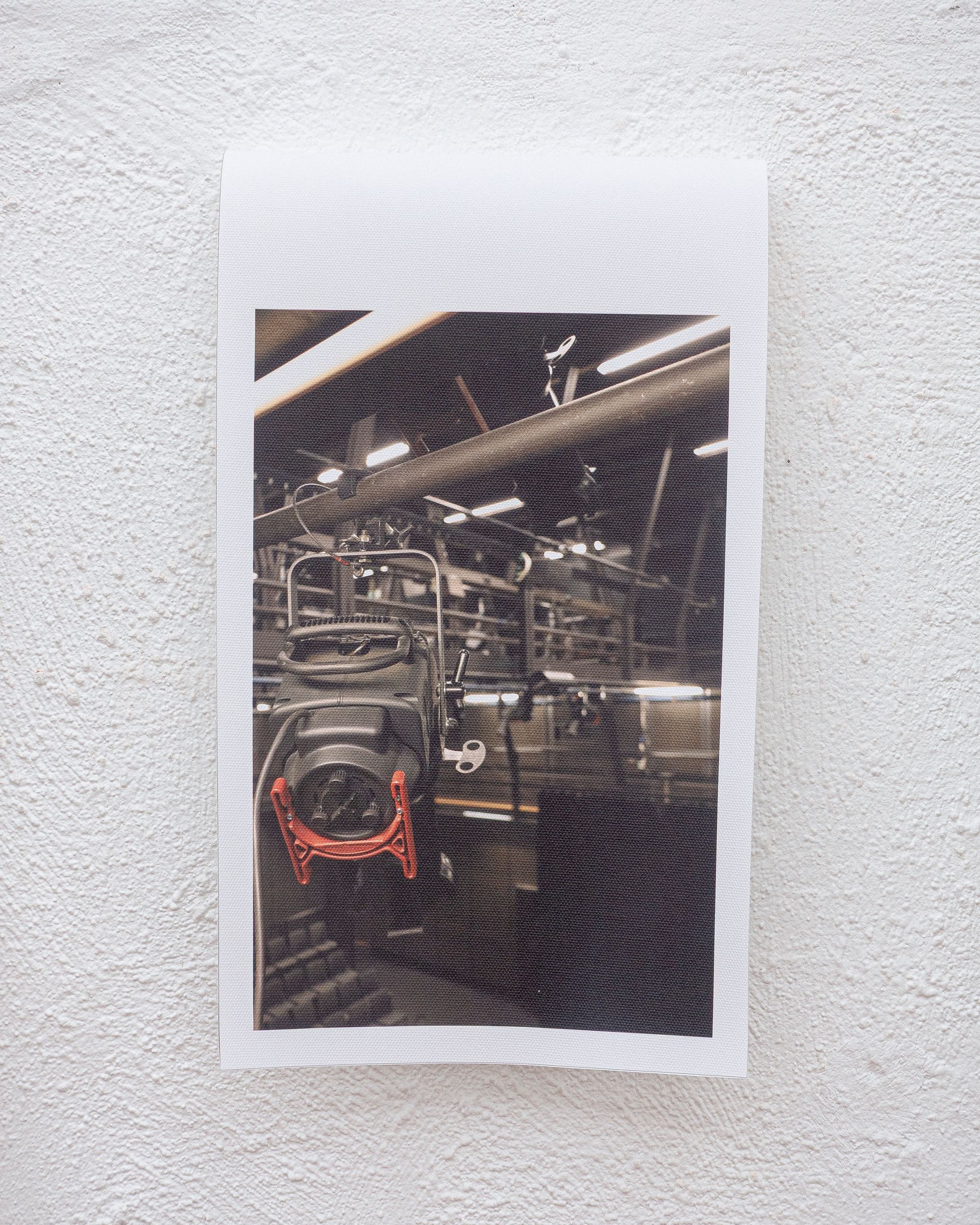
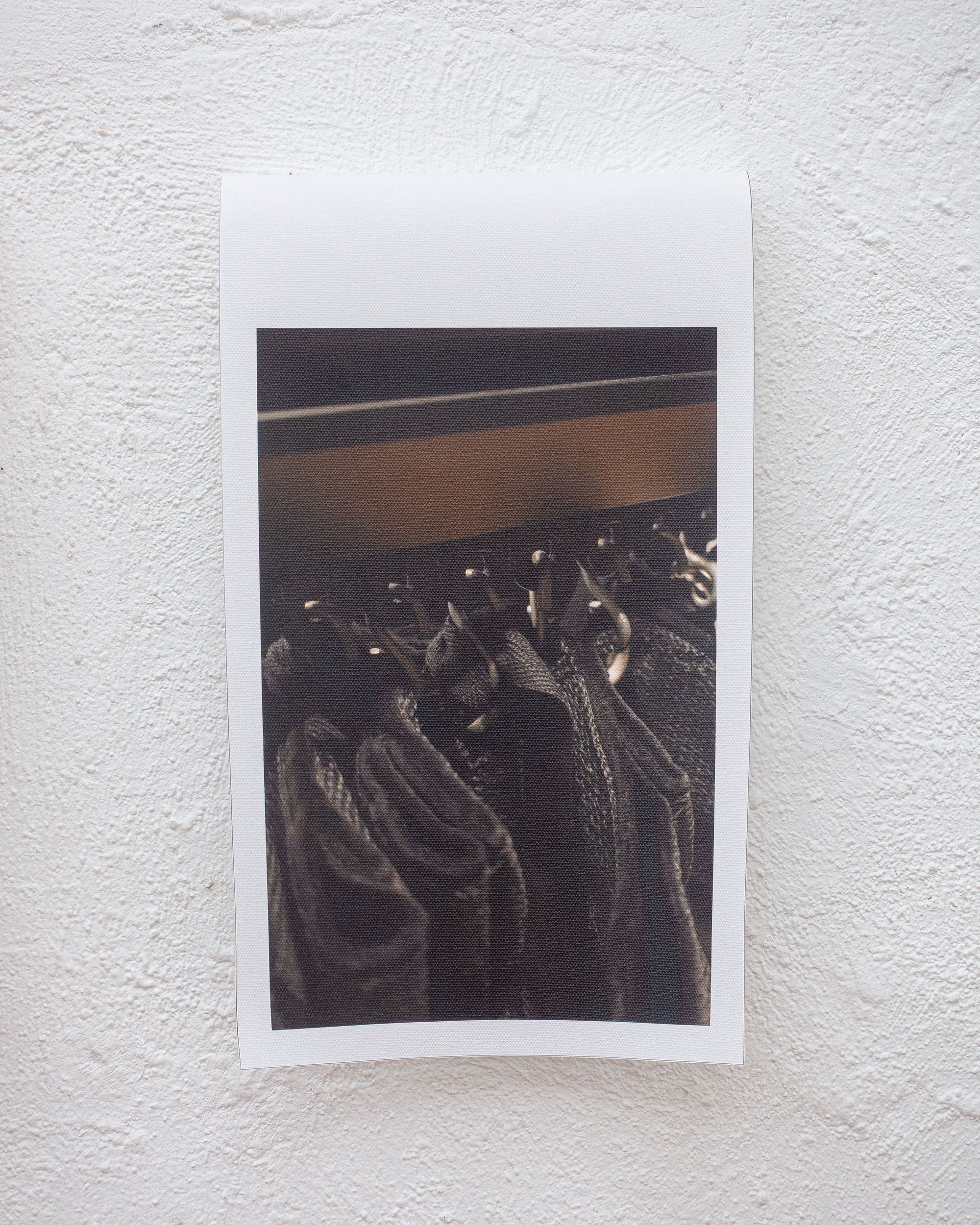
Stanchions Don’t Thresh
03.10 - 26.10.2025
Hulias
Oslo, Norway
www.hulias.info / @hulias.info
Somewhere between the velvet rope and the cracked foundation, Lars Nordby sets the stage. Not a real stage, mind you—not the kind with actors and cues—but something stranger. More personal. More exposed. A skeleton of staging. A ghost rig. An emotional blueprint with too many exits.
The exhibition Stanchions Don’t Thresh feels less like a show and more like the moment right before one. The good moment. A theatre emptied of performance but charged with its residue. Rope systems. Trusses. Tilted lightboxes suspended in quiet choreography. You enter the room, and it’s as if the walls are waiting to inhale. Or maybe exhale. The audience is already here, but there’s no script—only thresholds. It’s hard to say if you’ve arrived too early or too late.
Nordby’s theatre is one of exposure: mechanical, psychological, social. He brings the backstage into the gallery space not to dramatize, but to diagram. And yet, the drama leaks in anyway. Or is it projection? Who’s projecting whom here? Cables hold the lightboxes in tension—each an image of a theatre stage under shifting illumination. Are these different theatres, or the same one photographed over time? I’m told they form a loop. I’m told there’s no clear beginning or end. But that’s the kind of thing I would tell myself, isn’t it?
There’s a doorman at the threshold. Velvet stanchions stand like punctuation marks around the perimeter. These are symbols of belonging, but also of exclusion. Their presence flirts with ritual, choreography, control. They don’t thresh—but they separate. They don’t enforce, but they imply. Inside, everything appears balanced. But only barely. As if someone backstage has walked off mid-cue.
The Irrelational, Nordby calls it—a kind of anti-relation that still binds, insistently, uneasily. Not the absence of relation, but its doubling-back. Its static. Its grip. A closeness that estranges. As if every touch carried within it the ghost of retreat. I write this down. I underline it. I wonder if I’ve written it before. Perhaps I have.
Some sculptures lean. Others resist. The whole thing teeters, deliberately. A machine made of metaphors—but also of hardware, plaster, and rope. Theatricality here is not decoration, not illusion. It is ontology. It is a way of revealing how much of our architecture—social, emotional, spatial—is held together by scaffolds we’re not supposed to see. So Lars shows them. And by doing so, he puts us in them.
Somewhere in the gallery, someone whispers that Igory Mansotti is just a name. A placeholder. A role to be filled. Maybe so. Maybe I’m part of the set. Maybe I was built into it all along. Like a mirror angled slightly too far from the wall, I catch a glimpse of myself in the distance. And then I look away.
- Igory Mansotti
Photo Credits: Print/Web: Hulias/Jørn Aagaard @hulias.info/@jornaagaard
Special thanks to Oslo Nye (Thomas Kvitvik) and Hans Petter Røste Olsen
03.10 - 26.10.2025
Hulias
Oslo, Norway
www.hulias.info / @hulias.info
Somewhere between the velvet rope and the cracked foundation, Lars Nordby sets the stage. Not a real stage, mind you—not the kind with actors and cues—but something stranger. More personal. More exposed. A skeleton of staging. A ghost rig. An emotional blueprint with too many exits.
The exhibition Stanchions Don’t Thresh feels less like a show and more like the moment right before one. The good moment. A theatre emptied of performance but charged with its residue. Rope systems. Trusses. Tilted lightboxes suspended in quiet choreography. You enter the room, and it’s as if the walls are waiting to inhale. Or maybe exhale. The audience is already here, but there’s no script—only thresholds. It’s hard to say if you’ve arrived too early or too late.
Nordby’s theatre is one of exposure: mechanical, psychological, social. He brings the backstage into the gallery space not to dramatize, but to diagram. And yet, the drama leaks in anyway. Or is it projection? Who’s projecting whom here? Cables hold the lightboxes in tension—each an image of a theatre stage under shifting illumination. Are these different theatres, or the same one photographed over time? I’m told they form a loop. I’m told there’s no clear beginning or end. But that’s the kind of thing I would tell myself, isn’t it?
There’s a doorman at the threshold. Velvet stanchions stand like punctuation marks around the perimeter. These are symbols of belonging, but also of exclusion. Their presence flirts with ritual, choreography, control. They don’t thresh—but they separate. They don’t enforce, but they imply. Inside, everything appears balanced. But only barely. As if someone backstage has walked off mid-cue.
The Irrelational, Nordby calls it—a kind of anti-relation that still binds, insistently, uneasily. Not the absence of relation, but its doubling-back. Its static. Its grip. A closeness that estranges. As if every touch carried within it the ghost of retreat. I write this down. I underline it. I wonder if I’ve written it before. Perhaps I have.
Some sculptures lean. Others resist. The whole thing teeters, deliberately. A machine made of metaphors—but also of hardware, plaster, and rope. Theatricality here is not decoration, not illusion. It is ontology. It is a way of revealing how much of our architecture—social, emotional, spatial—is held together by scaffolds we’re not supposed to see. So Lars shows them. And by doing so, he puts us in them.
Somewhere in the gallery, someone whispers that Igory Mansotti is just a name. A placeholder. A role to be filled. Maybe so. Maybe I’m part of the set. Maybe I was built into it all along. Like a mirror angled slightly too far from the wall, I catch a glimpse of myself in the distance. And then I look away.
- Igory Mansotti
Photo Credits: Print/Web: Hulias/Jørn Aagaard @hulias.info/@jornaagaard
Special thanks to Oslo Nye (Thomas Kvitvik) and Hans Petter Røste Olsen